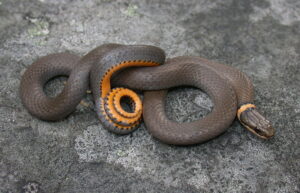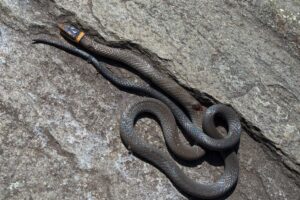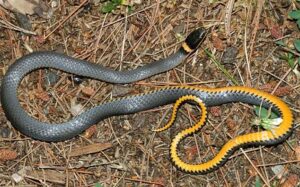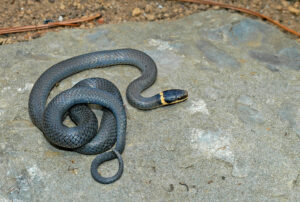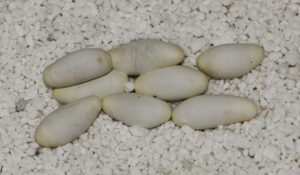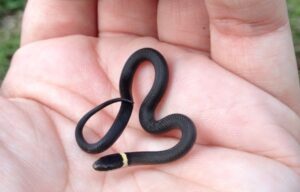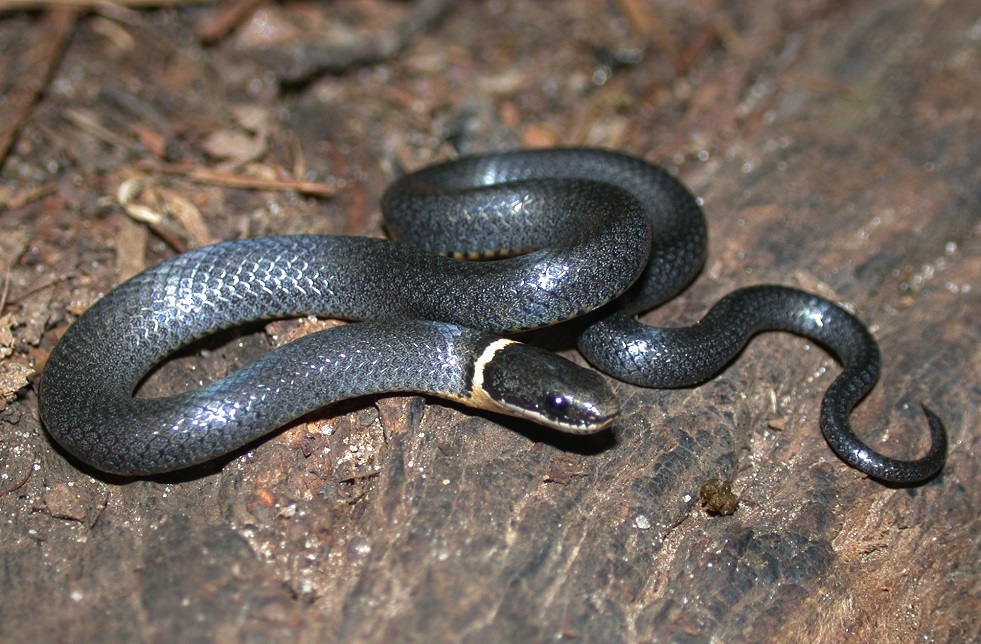Northern Ringneck Snake (Diadophis punctatus edwardsii)
Updated on
06/02/2023The northern ringneck snake or northern ring-necked snake is a small, secretive subspecies of the ring-necked snake that is endemic to North America. The subspecific name, edwardsii, is in honor of English ornithologist George Edwards who described it without assigning a binomial name. His observations were based on a specimen received from William Bartram, an American explorer, natural historian, botanist, and ornithologist.
Scientific Classifications
- Suborder:Serpentes
- Family:Colubridae
- Genus:Diadophis
- Species:D. punctatus
- Subspecies:D. p. edwardsii
Conservation Status
Description
Size
The adults are generally 10-15 in (25-38 cm) in total length, but some individuals can grow to more than 2 ft (61 cm) in total size.
Color and Appearance
The body color of the northern ring-necked snake is bluish-gray to black. There is a complete, narrow, orange or yellow ring around the neck. The underside matches the ring color and lacks a pattern. The complete ring and lack of large spots on the belly differentiate it from the other subspecies of the ring-necked snake.
Are They Dangerous to Humans
When captured, the snake doesn’t bite but releases a foul-smelling musk from its anal glands. Another defensive measure is exaggerated tail coiling that distracts the attacker’s attention from the serpent’s head. It is because the ventral surface of the tail is brightly colored. It has a mild venom that is only used to subdue its prey and is harmless to humans.
Northern Ringneck Snakes at a Glance
Distribution
In the United States, it is found throughout the Mid-Atlantic states, New England, and the Great Lakes region, and also at higher altitudes in the South. To be more specific, it inhabits Connecticut, NE Alabama, NW Georgia, S Indiana, SE Illinois, Kentucky, Massachusetts, W Maryland, Michigan, N New Jersey, NE Minnesota, New York, Ohio, W North Carolina, Pennsylvania, extreme NW South Carolina, Rhode Island, E Tennessee, West Virginia, W (western) Virginia, Florida, and Wisconsin.
Habitat
The northern ringneck snake prefers moist wooden areas but can also live in open areas in hilly or mountainous terrains or the edges of wetlands. Moist, humid basements can also be occupied by the species.
The nocturnal colubrid frequently hides and travels under fallen logs, rocks, and leaf litter. So it is hardly seen despite its high population density. Being a social species, multiple snakes can share the same hiding place during any given season. Winter sees them hibernate in stone walls, cellars, small mammal burrows, rotting logs, or brush piles.
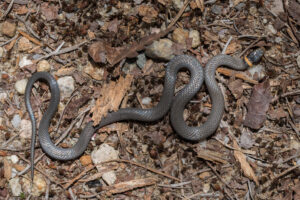
Lifespan
It can live for up to 20 years.
Predators
It falls prey to toads, bullfrogs, predatory birds, and mammals, including shrews. The babies may also be preyed upon by large spiders and large centipedes.
Diet
It eats earthworms, salamanders, insects, slugs, frogs, small snakes, and small lizards. The red-backed salamander is its favorite food.
Reproduction
Oviparous (lays eggs that hatch outside the body)
In early summer, a clutch of 2-10 eggs is laid by a female in moist, decaying wood or under a rock. As other females may also use the same egg-laying site, the number of eggs found in a single site can reach up to around 55.
The eggs are 0.75-1.25 in (21-34 mm) long and 0.27-0.31 in (7-8 mm) wide. They hatch in two months, in late summer. The hatchlings measure 3.9-4.9 in (100-125 mm) in total length and essentially resemble the adults in their looks. But they have brighter colors on their rings and bellies.
Source
inaturalist.org, staticflickr.com, i.pinimg.com, virginiaherpetologicalsociety.com, kingsnake.com, projectnoah.org

